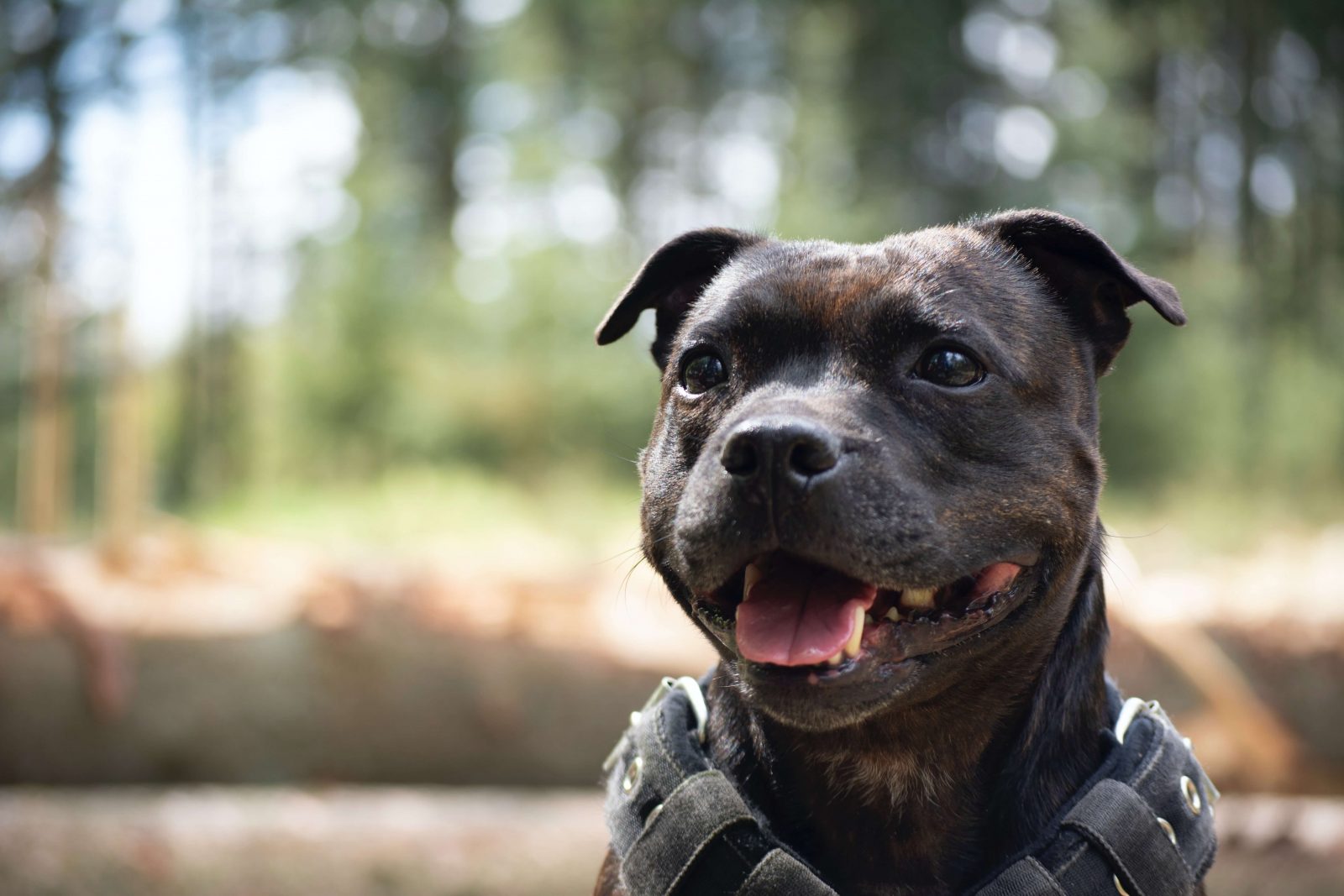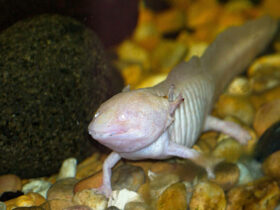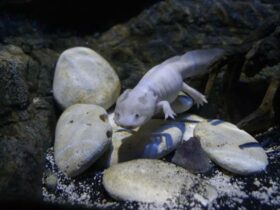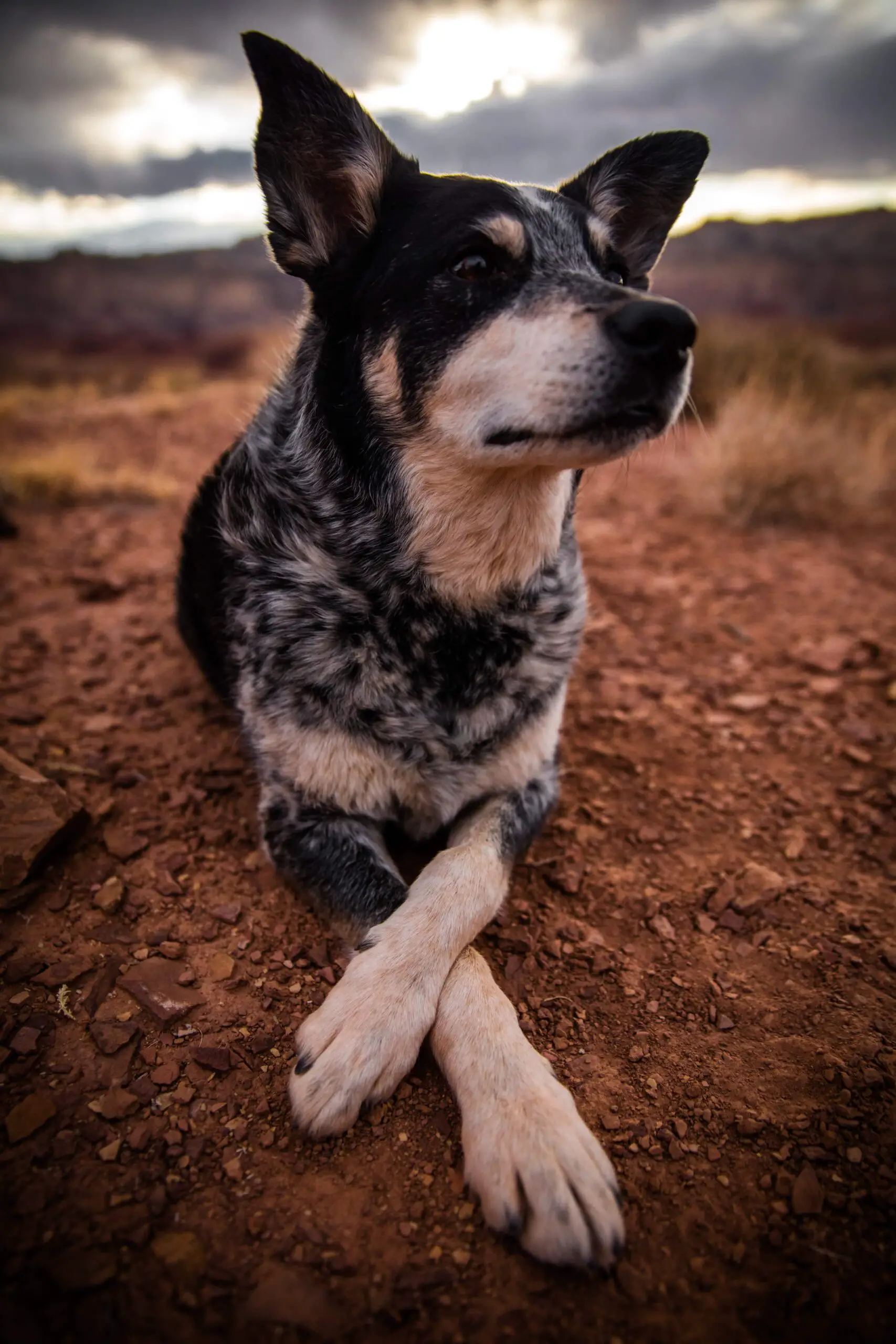
The Staffordshire bull terrier, often known as the Stafford, the Staffy, or simply the Staffie, is a medium-sized dog with a muscular, athletic build. Despite its rough exterior, the American Kennel Club recognized the Stafford as a legitimate dog breed in the 1970s due to the breed’s amiability, loyalty, and devotion. When properly taught and socialized, the Stafford displays “nanny-like” tendencies for children. However, use care around other pets because of this breed’s high prey drive and history of dog fighting.
The Staffordshire Bull Terrier was also bred from the Bulldog and the Black and Tan Terrier to create a fighting breed, as was the Bull Terrier. Fans of the original kind of bull terrier cross stayed faithful to their favored form even after Bull Terrier inventor James Hinks mixed in other breeds like the Collie to alter the breed’s distinctive head shape. Unfortunately, the breed’s early history with fighting made it difficult to get recognition, and it wasn’t until the 1930s that The Kennel Club officially acknowledged the breed. Because the breed originated in the “dark country” of Staffordshire and northern Birmingham, it was given the name Staffordshire.
If you want to acquire a puppy or breed your dog, you should be aware of any potential health problems that run in the breed. Breeders may combat these problems by implementing screening programs and inbreeding coefficient calculators in their work. The Staffordshire bull terrier is known as a trusted companion and protector for children in its native England, earning it the moniker “nanny dog.” This dog may seem menacing, but he’s really a softie. The breed as a whole is calm, friendly, and eager to play. Although not actively seeking it, the Staffordshire is not always friendly with other canines and will not back down from a battle.
Although obedience training is not Staffordshire’s forte, it is feasible to do so. Forcing the Stafford to train is futile, but if you turn it into a game, he’ll gladly participate. The Staffordshire Bull Terrier is a breed of dog that thrives on companionship and exercise. He is much more of a people dog than a yard dog, and he is much more of an athlete than he would ever be able to be if he were confined inside all day. Having a Stafford as a roommate means spending time together inside and out. Given enough mental and physical stimulation, the Stafford makes a good family pet. Some Staffordshires aren’t great among other dogs, so it’s important to keep them from having any kind of encounters while they’re free.
Contents
The Origins of the Staffordshire Bull Terrier
During the nineteenth century, the Staffordshire bull terrier was bred and refined in England specifically for use in dogfights. Bulldogs were bred with smaller terriers, like the Manchester Terrier, to produce a breed that was both quicker and smaller. Large, ferocious, and courageous, these bulldogs were unlike the modern-day version. Its previous names include “bull-and-terrier dogs,” “bulldog terriers,” and “ancient pit bull terriers,” among others. After the early 20th century, when dogfighting was outlawed, Staffords gained popularity as loving family pets.
The Staffordshire bull terrier first arrived in the United States around the end of the nineteenth century, but the American Kennel Club didn’t formally recognize the breed until 1974. Because of their tendency to be violent against other dogs and their tendency to hunt small creatures they mistake for prey, Staffordshire bull terriers should never be walked without a leash. They are not suited to off-leash dog areas. These dogs are powerful. Therefore they need to be trained not to tug on the leash. Other than that, though, they need very little to ordinary maintenance.
Exercise
The Stafford is a high-energy, athletic dog breed that needs to be exercised frequently. You should walk your dog vigorously for at least one hour every day. Keep in mind that the breed is particularly vulnerable to heat, so it’s important to take precautions while exercising outside during warmer months. Dog activities that provide mental and physical stimulation are ideal for Staffords. A yard that is securely fenced in is ideal, but keep in mind that the Stafford is a terrier and will try to dig out of the yard if given a chance. The bases of fences might benefit from reinforcement.
The Stafford’s short, sleek coat needs just the occasional brushing to look its best. In general, shedding in this breed is mild to moderate. However, it tends to rise with the changing of the seasons. Nails should be clipped regularly to promote healthy, pain-free feet.
Training
The Staffy, like any other breed, requires diligent training. This dog breed has a high IQ yet, if given a chance, maybe willful and independent. As a result, obedience training is crucial for canine management and discipline. As crucial as exercise is, socialization ensures that your dog adapts well to new environments.
Conclusion
Responsible breeders work hard to uphold the standards set by kennel groups like the American Kennel Club. Diseases of heredity are less common in dogs that have been bred using these standards. On the other hand, Staffordshire bull terriers are predisposed to a few genetic disorders. Here are a few considerations to bear in mind. When the hip socket of a dog develops improperly, a painful disease known as hip dysplasia may set in. If your dog’s kneecap ever pops out of place, they may have a condition called patellar luxation. Allergic responses to pollen, toxins, plants, insects, food, or medications may cause a variety of skin problems.
And Click here to read, the top 20 most common dog breeds in USA by Adopt Anim.








Leave a Reply